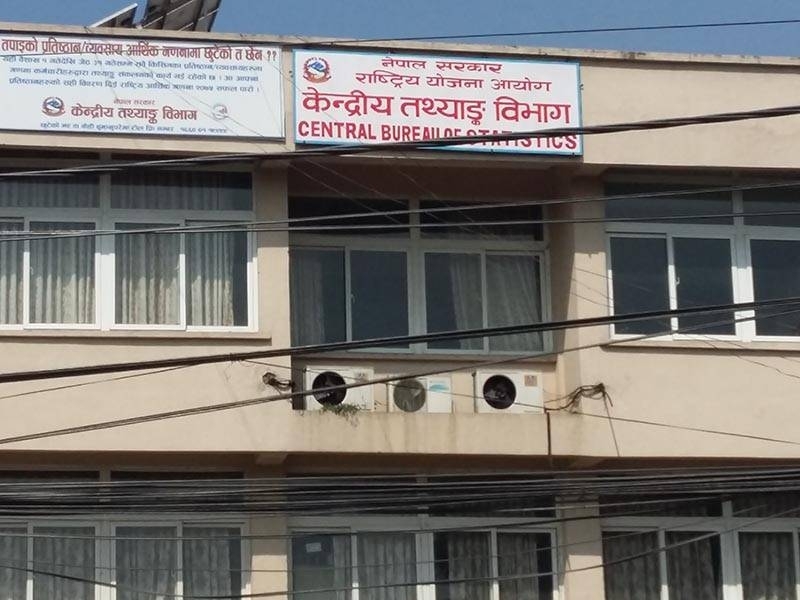
Central Bureau of Statistics today published the final data of the 12th national census conducted in November 2021, according to which Nepal's population has reached 29,164,578.
Unveiling the final report of the National Census, Prime Minister Pushpa Kamal Dahal said, "The Census provides a guideline for monitoring and assessing Nepal's commitments to the international forum regarding demography, its development and the goals of national development. It also helps analyse the existing indicators of development."
He added that the national census data, will make it easier to carve a path towards socialism-oriented inclusive development and implement the fundamental rights of citizens. According to the PM, the national census report shows imbalanced demographic pattern characterised by less number of youts and an increasing aged population. Similarly, population growth rate is shrinking and this is more rapid in the mountains and hills and among the rural population.
The final data has put the number of men in the country as 14,253,551 which is 48.98 per cent of the total population and women constitute 51.02 per cent (14,911,027). Similarly, the population of sexual and gender minorities is 2,928 - 0.01 per cent of the total population.
As per the report, the population has increased at the rate of 0.92 per cent in the last 10 years.
According to the 2021 census, Bagmati Province has the highest population of 6,120,000 which is 20.97 per cent of the total population.
Madhes Province is second with 6,110,000.
The province with the least population is Karnali with 5.79 per cent of the total population.
Geographically, Tarai has the highest population with 15,634,006 people living in the plains which is 53.61 per cent of the total population.
The hill region has a population of 11,757,624 which is 40.31per cent, while the mountain region is home to 6.80 per cent (1,772,948) of the total population.
As per the final data, there are 7,552,066 houses in the country.
Of them, 71.7 per cent is used for residential purposes, 10.1 per cent are animal sheds and food shelters, 6.3 per cent of the houses are unused, 5.9 per cent are used as kitchen and for other purposes.
Likewise, 3.1 per cent of the buildings are used for business purposes, 1.1 per cent are used by educational institutions, 0.4 per cent each is used by industries and organisations including government offices.
Hotels and lodges are operated in 0.3 per cent of the houses while 0.2 per cent are used by the health sector, and banks and financial institutions operate on 0.1 per cent of the total houses.
The census has put the country's literacy rate at 76.2 per cent an increase of 10.8 per cent compared to the last census.
The literacy rate has been determined after collection of data of the educational status of people aged 5 years and above.
The number of people aged 5 years and above is 26,675,975 and among them 23 million people know how to read and write.
As per the census, the literacy rate for male is 83.6 per cent while the female literacy rate is 69.4 per cent.
As of 2021, the urban population, those residing in metropolitan, sub-metropolitan and municipalities was 66.17 per cent while the population in rural municipalities was 33.83 per cent of the total population.
According to the summary of the final results of the national census, 2.2 per cent of the total population has some form of disability. Out of the total population, 647,744 have some form of disability. Among them, 351,301 are men and 293,443 are women.
As per the latest census 2,190,592 members from 1,555,961 families were residing outside the country. Of this number, 1,799,675 (82.2 per cent) are men and 390,917 (17.8 per cent) are women.












